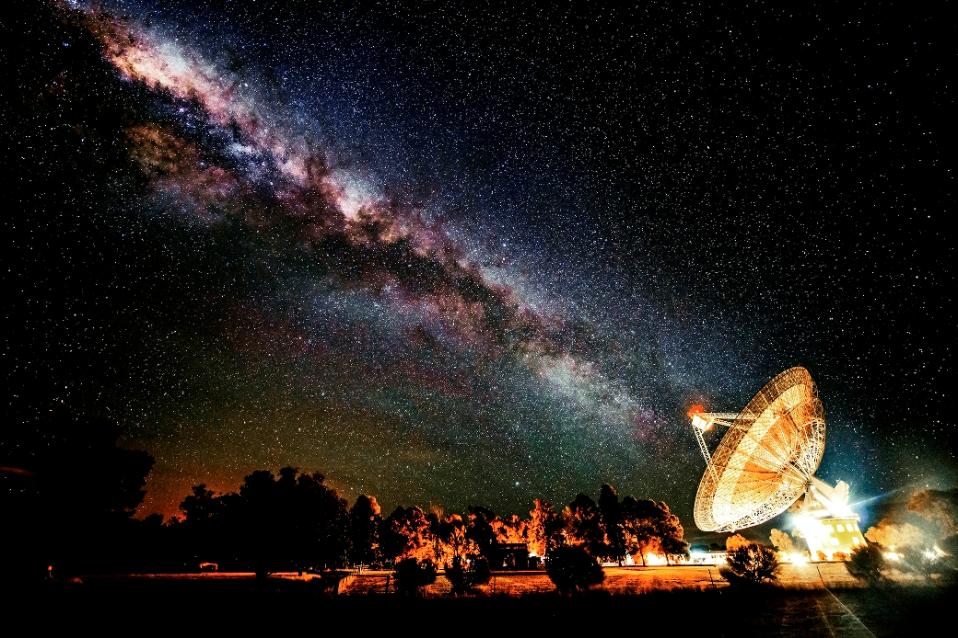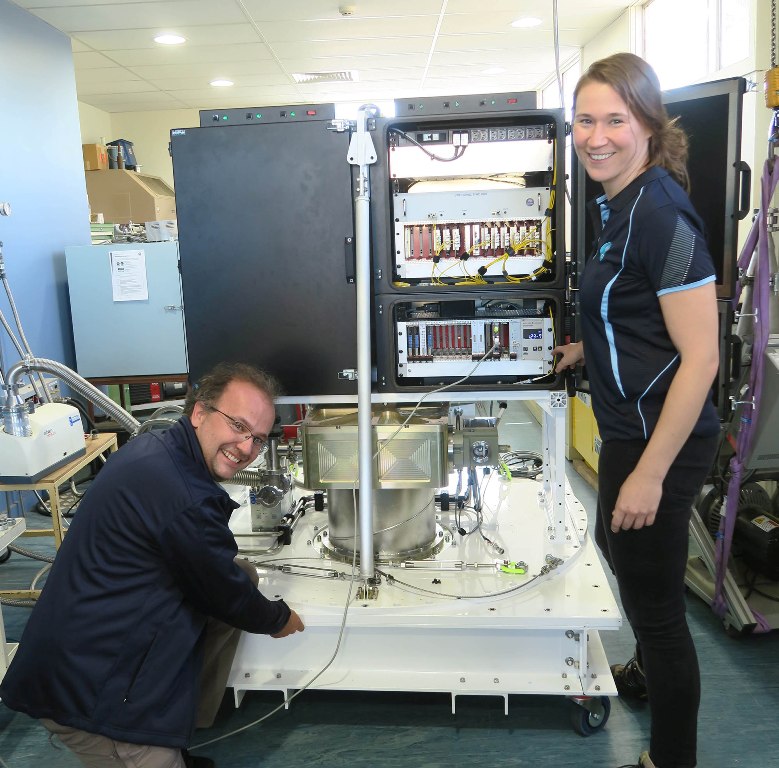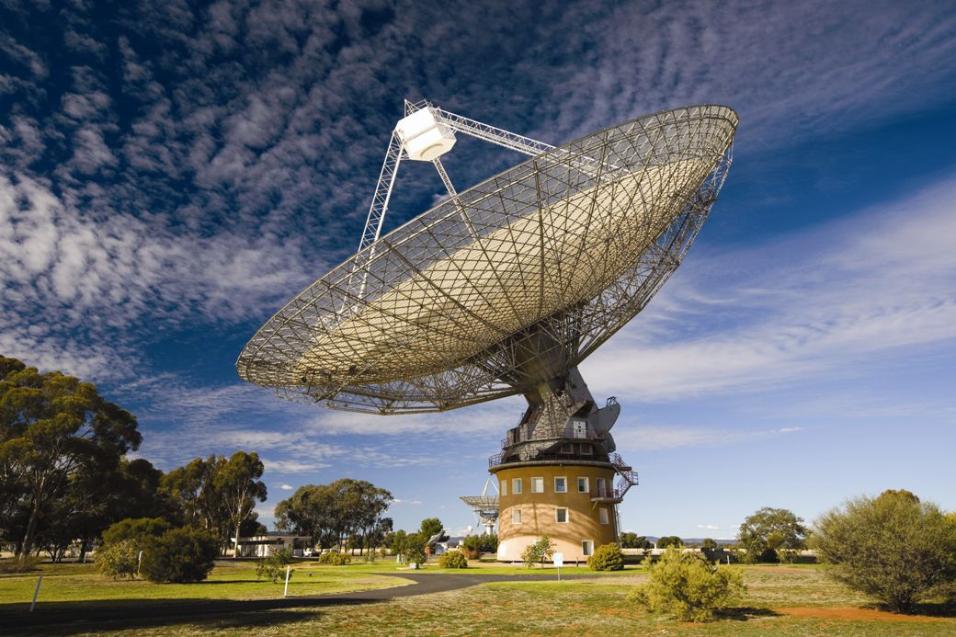May 20 - 26, 2018: Issue 360
Stargazing Live - A Guinness World Record Attempt On Wednesday May 23rd + CSIRO's Parkes Telescope’s New ‘Bionic Ear’ Hears More Of The Universe

Night image of Parkes. ©CSIRO, Wayne England
Join A Free Star Party In Your Area And Help Us Smash A World Record!
On Wednesday 23rd of May people all around Australia will be gathering at local parks, beaches, observatories and schools to break the Guinness World Record attempt for the Most people stargazing - multiple venues.
The current World Record, set in 2015 by the Australian National University, is 7,960 people across 37 locations. In partnership with the ANU, we are aiming to set a new record so large that it will be difficult to break again, but we need your help to achieve this!
Sign up for a free ticket from our list of public Star Parties and get set for an evening under the stars with your friends and family.
Can't find an event near you? Keep checking back in here as we'll be updating the list regularly.
You could even plan to host an event yourself. Have a look at the fact sheet and register to host your own star party!
Want to know more? Visit the Stargazing site.
Happy Stargazing!
Telescope’s ‘Bionic Ear’ Hears More Of The Universe
May 15, 2018: CSIRO
New technology installed on CSIRO’s Parkes radio telescope today will let astronomers ‘hear’ a wider range of radio waves from objects in space, opening the way to new science. The new equipment is a receiver, a ‘bionic ear’ for the cosmos which catches radio waves and turns them into electrical signals for astronomers to analyse.
The $2.5 million instrument was developed by CSIRO and a consortium of Australian universities led by Swinburne University of Technology, with funding from the Australian Research Council, Germany’s Max Planck Institute for Radioastronomy and the Chinese Academy of Sciences.
CSIRO and Swinburne each designed and built parts of the system.
“Stars and galaxies ‘sing’ with different voices, some high, some low,” CSIRO astronomer Dr George Hobbs said.
“It’s like a choir out there.”
A receiver determines which radio frequencies the telescope can hear.
“Until now we’ve had receivers that heard just one part of the choir at a time,” Dr Hobbs said.
“This new one lets us listen to the whole choir at once.”
The new receiver covers a very wide frequency range, 700 MHz to 4 GHz. It does the work of several existing receivers and also covers extra frequencies that they don’t.

CSIRO astronomers Dr George Hobbs and Dr Jane Kaczmarek with the receiver.
Parkes has been continually upgraded throughout its lifetime and is already one of the world’s most productive radio telescopes.
The telescope is now 10,000 times more sensitive than when it was built in 1961 and has found most of the known pulsars and most of the ‘fast radio bursts’ that still mystify astronomers.
It also helped reveal the nature of bright sources called quasars and discovered a new spiral arm in our Galaxy.
"Most of the projects the new system will be used for are forefront astronomical science," Swinburne’s Professor Matthew Bailes, who led the university consortium, said.
Those projects include searching for gravitational waves from black holes in the early Universe, studying the insides of neutron stars, and mapping the magnetic fields that run through our Galaxy.
The new receiver will let the telescope do different projects at the same time.
“While some of us are timing a pulsar, other astronomers could be looking for the signs of newborn stars,” Dr Hobbs said.
“The expertise built up in these technologies will enable Australia to compete effectively into the era of the Square Kilometre Array, the world’s largest radio telescope.”
Swinburne engineers designed the data processor for the Parkes receiver using experience gained through work for the Square Kilometre Array.
CSIRO is a world leader in receiver design. CSIRO and engineers from the Chinese Academy of Sciences recently worked together to develop a receiver for China’s Five-hundred-meter Aperture Spherical radio Telescope (FAST). In addition, the Parkes telescope is following up radio sources detected with FAST.
Watch Stargazing Live on ABC TV on 22 May to see Parkes and learn more about its research.
Stargazing Live -
A Guinness World Record Attempt
On Wednesday May 23rd, 2018 At Centennial Park
Join us for an evening of “starry” fun and excitement here in Centennial Park, as we take part in the ABC’s World record attempt by hosting a stunning night under the stars!
From 7.00 pm, you can check in and enjoy a range of astronomy activities. We will have ABC children’s presenters Angharad “Rad” Yeo and Gus “Goose” Ronald on site, hosting a Q&A with CSIRO and UNSW astronomers, who will help you uncover the secrets of the universe. Whilst our Aboriginal educators will tell you the intricate, cultural stories behind the stars.
From 8.00 pm, a large outdoor screen will broadcast the live ABC show, hosted by physicist Brian Cox and TV Personality Julia Zemiro, as we join thousands of other stargazers across Australia in our attempt to break the World Record for Most People Stargazing Simultaneously Across Multiple Locations!
Bring your own telescope or order one through us, there will be food trucks offering some delicious snacks for the hungry stargazers.
For more information please head over to www.abc.net.au/stargazing
General Information
Age: All welcome
Times: 7.00 - 9.00 pm
Meeting Point/Venue: The WILD PLAY Discovery Centre, off Dickens Drive, Centennial Park
Price: FREE
We recommend to bring a torch
Registration
Registration essential. Please register here.
Special notes
Please enter Centennial Park through Paddington Gates or Randwick Gates and follow the signage to the check in.
Exit the park through Randwick Gates after the event.

With a diameter of 64 metres, Parkes is one of the largest single-dish telescopes in the southern hemisphere dedicated to astronomy. ©CSIRO